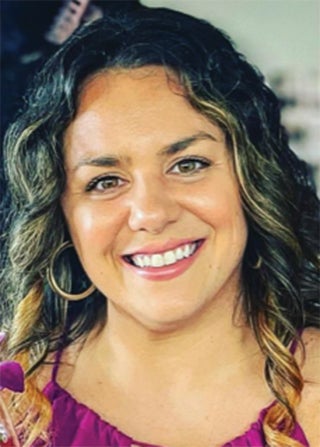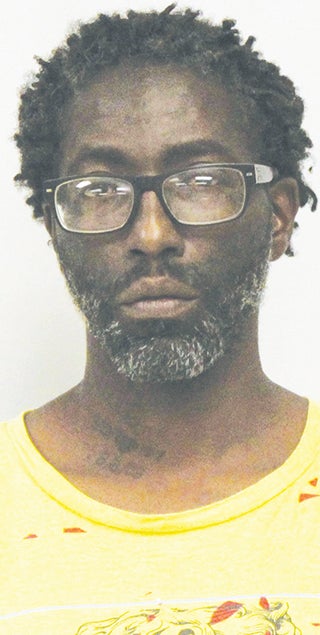Black History: Inventors helped to make our lives easier
Published 11:16 am Thursday, February 11, 2021
|
Getting your Trinity Audio player ready...
|
By Sharon Anderson
For the Enterprise
We are all familiar with famous inventors and their inventions. But are you as familiar with the myriad of African Americans who have contributed to the creation of products and services that make our everyday lives easier, or who have made major scientific findings?
Here is a list of just a few of those women and men behind, that for many, little is known about their contributions.
Sarah Boone
In 1892, Sarah Boone improved upon the ironing board. Born a slave in New Bern, Boone was one of the first Black women in the U.S. to receive a patent. Boone expanded on the ironing board’s design by changing the shape from a horizontal wooden block to a narrower, curved design, making it easier to iron sleeves and he bodies of women’s garments. Boone’s design was the precursor to the modern-day ironing board.
Mary Van Brittan Brown
Mary Van Brittan Brown, a nurse, invented an early security system that used a camera that could slide into and look through four peepholes in her front door. The camera’s view would then appear on a monitor located in her home so she could survey her surroundings. Feeling unsafe, Brown devised the security system for her Queens, N.Y. home. Later she added a microphone and a button to unlock the door and a button to contact police. In 1966 she and her husband took out a patent for the home security system. Today’s security systems took various elements from her original design.
Dr. Kizzmekia Shanta Corbett
If you are someone who has been impacted by the deadly COVID-19 virus, please give a resounding thanks to Dr. Kizzmekia “Kizzy” Corbett, co-lead of the team that helped develop the Moderna vaccine. Dr. Corbett is a viral immunologist at the Vaccine Research Center (VRC) at the National Institute of Allergy and Infectious Diseases, National Institute of Health, where she serves as scientific lead of the VRCs Coronavirus Team. When the pandemic began, Corbett started work on a vaccine to combat the virus. To this end, she and her team partnered with Moderna, a biotechnology company. Dr. Anthony Fauci, the head of the National Institute of Allergy and Infectious Diseases at the National Institutes of Health, has said, “The vaccine you are going to be taking was developed by an African American woman and that is just a fact.” Dr. Corbett is a native North Carolinian, born in Hurdle Hills, (near Henderson).
Frederick McKinley Jones
Frederick McKinley Jones’s inventions included engines, sound equipment and x-ray machines. But he is best known for the development of portable refrigeration equipment used by the U.S. military to carry food and blood during World War II. Jones was born in 1893 in Cincinnati, Ohio. He had a talent and interest in mechanics, having taught himself mechanical and electrical engineering. Over the course of his life, Jones received more than 60 patents. Jones co-founded the U.S Thermo Control Co. (later known as Thermo King) in 1940. By 1949, the company was worth millions of dollars. In 1944, he became the first African American elected to the American Society of Refrigeration Engineers. In 1991, McKinley was posthumously awarded the National Medal of Technology by President George W. Bush. Jones, becoming the first African American to receive the award.
Lyda Newman
in 1898 Lyda Newman, a hairdresser, applied for a patent for an improved design of the hairbrush. Little is known of Newman, but it is thought she was born sometime around 1885 in Ohio. Her hairbrush design had “evenly spaced rows of bristles with open slots to guide debris away from the hair and into a recessed compartment. There was a back that could be opened at the touch of a button for cleaning out the compartment.”
Henry Thomas Sampson Jr.
Henry Thomas Sampson Jr. was an inventor and pioneer in the field of nuclear engineering. Born in Jackson, Miss. in 1934, Sampson became the first African American in the U.S. to earn a Ph.D. in nuclear engineering. Sampson holds patents that include co-invention of the Gamma-Electric cell and an improved process of case bonding propellant grains within a rocket chamber. Sampson is the recipient of numerous awards and recognitions, including the Atomic Energy Commission Award and was named a fellow in the U.S. Navy.
Alexander Miles
Before Alexander Miles invented automatic elevator doors, people had to manually shut the shaft and elevator doors before riding. Forgetting to do so was perilous. When Miles’s daughter almost fell down the shaft, he worked out a design that automatically opened and closed elevator shaft doors. In 1887 Miles applied for a patent. His design can be seen in elevators used today.
Elijah McCoy
There are many stories as to how the term “the real McCoy” came into being. One story is attributed to Canadian born inventor, Elijah McCoy, whose inventions became associated with high quality and functionality. Following an apprenticeship in Edinburgh, Scotland in mechanical engineering, McCoy was unable to gain employment in the US as an engineer due to racial discrimination. He was eventually hired by the Michigan Central Railroad as a fireman and oiler in the boiler room of trains. While there, McCoy invented and patented the oil-drip cup, an automatic oiling device for the moving parts of steam locomotives. The device’s design was not complicated and was easily replicated by competitors. However, McCoy’s design had the best reputation, and that may have been how the phrase, “the real McCoy” became popular. In all, McCoy held numerous US patents, the actual number ranges from 57 – 72, mostly related to lubricating devices, retaining ownership to very few of them. He was inducted into the National Inventors Hall of Fame.
I have shared with you a fraction of the hundreds of African Americans who have made contributions to improve the lives, not only for America, but the world. The recent debate about over revised standards that analyze race theory in the curriculum of K-12 history education in North Carolina schools was decided when the State Board of Education voted to revise American history curriculum, despite intense opposition. It is my hope that history facts, like the ones I have shared, will not continue being little known history facts.
Anderson, a graduate of Davie County High School, N.C. Central University and The Ohio State University, resides in Bermuda Run, and will write a weekly column on black history every week during February.



